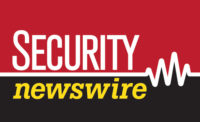Congress refuses to halt the one program the Transportation Security Administration has offered to minimize: pilots who pack guns, according to an article from POLITICO.
The House just passed an amendment in its Homeland Security appropriations bill that would boost funding for armed-pilot training by $10 million. The TSA and the Obama administration both proposed cutting financing for that program in half, the article says.
“The last line of defense is the pilot’s ability to defend the cockpit,” Rep. Chip Cravaack (R-Minn.), who was a gun-toting pilot when he served as a Federal Flight Deck Officer, told POLITICO. “There are always holes, even with the most scrutiny. This is a significant deterrent for terrorists.”
Cravaack’s amendment would pump the training program to $35.5 million by pulling funds from TSA screener payroll and maintenance accounts, the article says. Cravaack, vice chairman of the Transportation and Infrastructure Aviation Subcommittee, said current funding levels leave a backlog of eager participants waiting for background checks. The exact number of armed pilots remains classified, but it does measure in the thousands.
The program grew out of legislation that created the TSA. The law passed with bipartisan support in 2002 and made it possible for pilots to volunteer for week-long training and follow-ups on weapons handling, POLITICO reports. Pilots have never found reason to use their guns.
Cravaack and other proponents say the administration intends to dismantle the decade-long program through sharp budget cuts. The administration has recommended reducing the program’s budget from $25 million to $12.5 million and taking $36.5 million from the Federal Air Marshal Service’s $929.6 million budget, the article says.
In its funding request, the Office of Management and Budget cited enhancements to aviation security, such as comprehensive screening and locked cockpit doors, that “have greatly lowered the chances of unauthorized cockpit access and represent a comprehensive and redundant risk-mitigation strategy that begins well before passengers board the aircraft.”
Kimberly Thompson, a spokeswoman for TSA’s Aviation Security Advisory Committee, said the agency supports multilevel security but must recognize financial realities. “As we continue to face declining budgets, we have to prioritize security investments based on risk,” she said. She highlighted the thousands of law enforcement officers and federal air marshals who take to the skies, POLITICO reports.
The program’s defense lingers partly on cost-effectiveness. The Air Line Pilots Association has calculated it costs $15 per flight for armed pilots compared with more than $3,000 for federal air marshals, partially because pilots don’t get paid for their law enforcement propensities, the article says.
The Senate Appropriations Committee has approved $24 million for the program, $1.46 million below last year, according to POLITICO.






